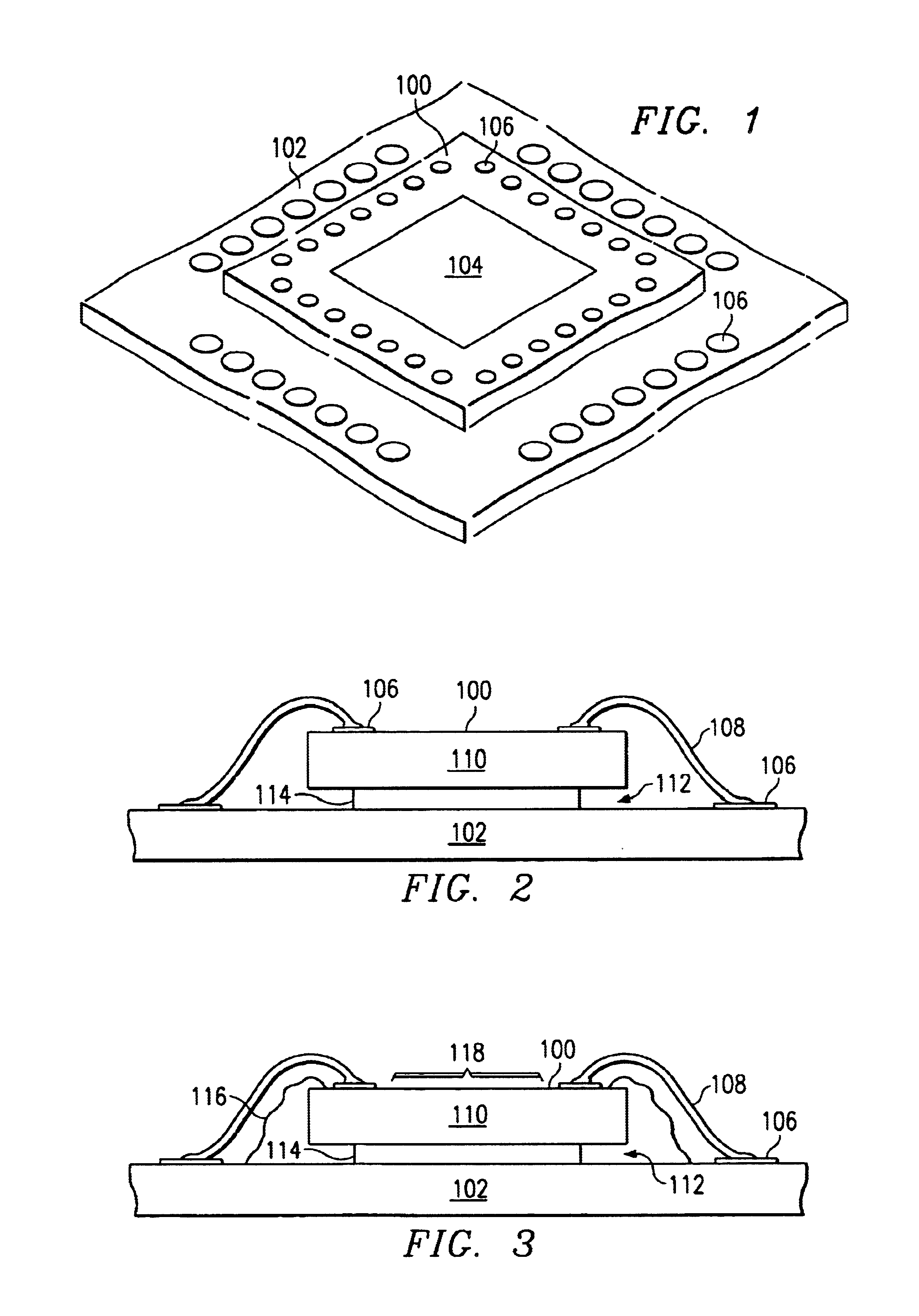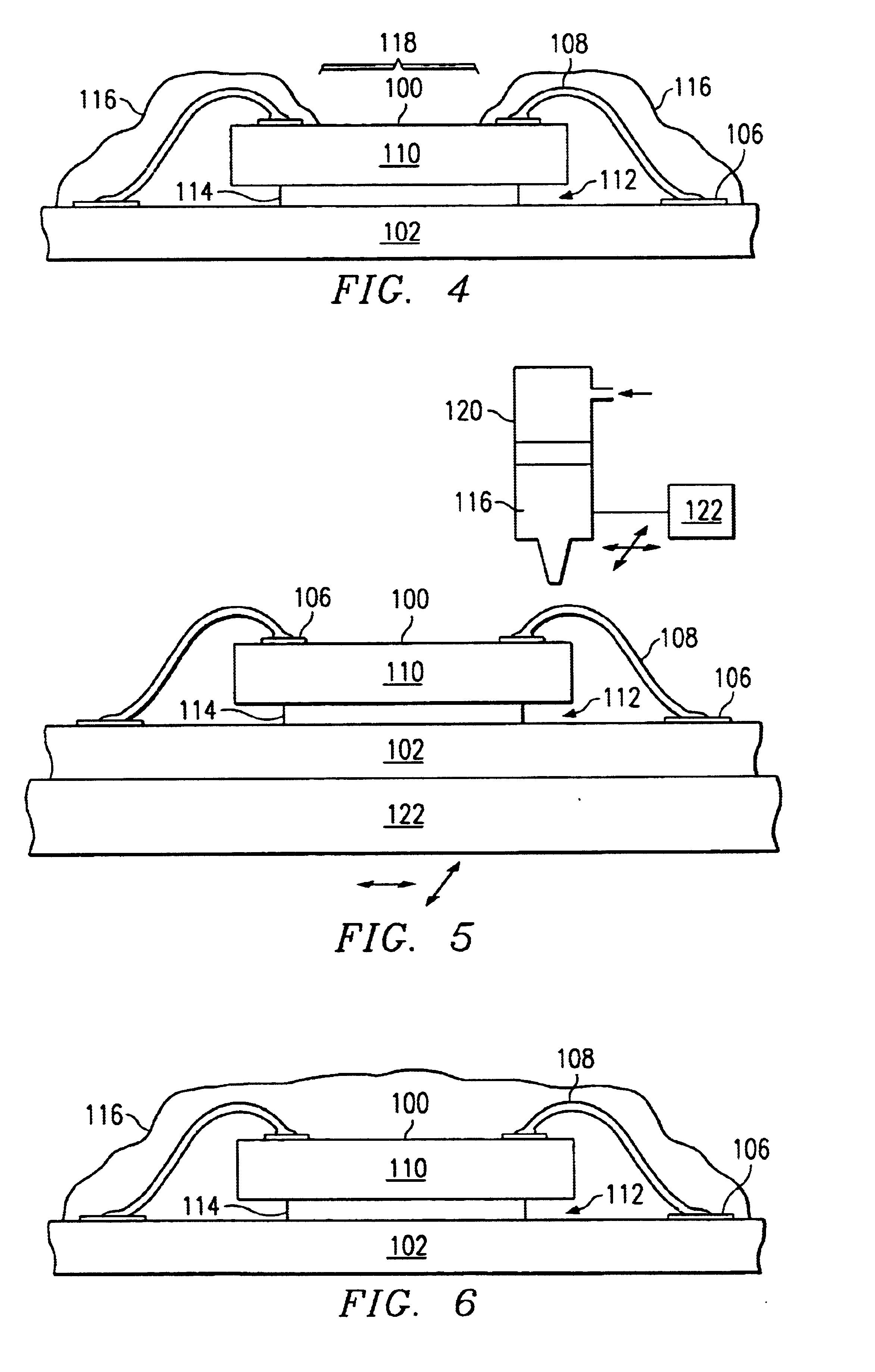Encapsulation for particle entrapment
- Summary
- Abstract
- Description
- Claims
- Application Information
AI Technical Summary
Benefits of technology
Problems solved by technology
Method used
Image
Examples
Embodiment Construction
A new system and method has been developed to eliminate many of the debris-caused failures of micromechanical devices. These failures are eliminated by encapsulating the debris such that it cannot migrate to debris sensitive portions of the micromechanical device. The debris is encapsulated in place over portions of the device that are tolerant of the encapsulating material. The encapsulating material avoids regions of the micromechanical device, such as exposed moving components, that would be harmed by contact with the encapsulating material. In addition to encapsulating existing debris, the encapsulating material is also deposited over regions of the device that have been determined to generate significant quantities of debris. These regions typically include the sidewalls of the silicon substrates on which many micromechanical devices are formed.
FIG. 1 is a perspective view of a micromechanical device 100 such as a digital micromirror device (DMD™) mounted to a package substrate...
PUM
 Login to View More
Login to View More Abstract
Description
Claims
Application Information
 Login to View More
Login to View More - R&D
- Intellectual Property
- Life Sciences
- Materials
- Tech Scout
- Unparalleled Data Quality
- Higher Quality Content
- 60% Fewer Hallucinations
Browse by: Latest US Patents, China's latest patents, Technical Efficacy Thesaurus, Application Domain, Technology Topic, Popular Technical Reports.
© 2025 PatSnap. All rights reserved.Legal|Privacy policy|Modern Slavery Act Transparency Statement|Sitemap|About US| Contact US: help@patsnap.com



